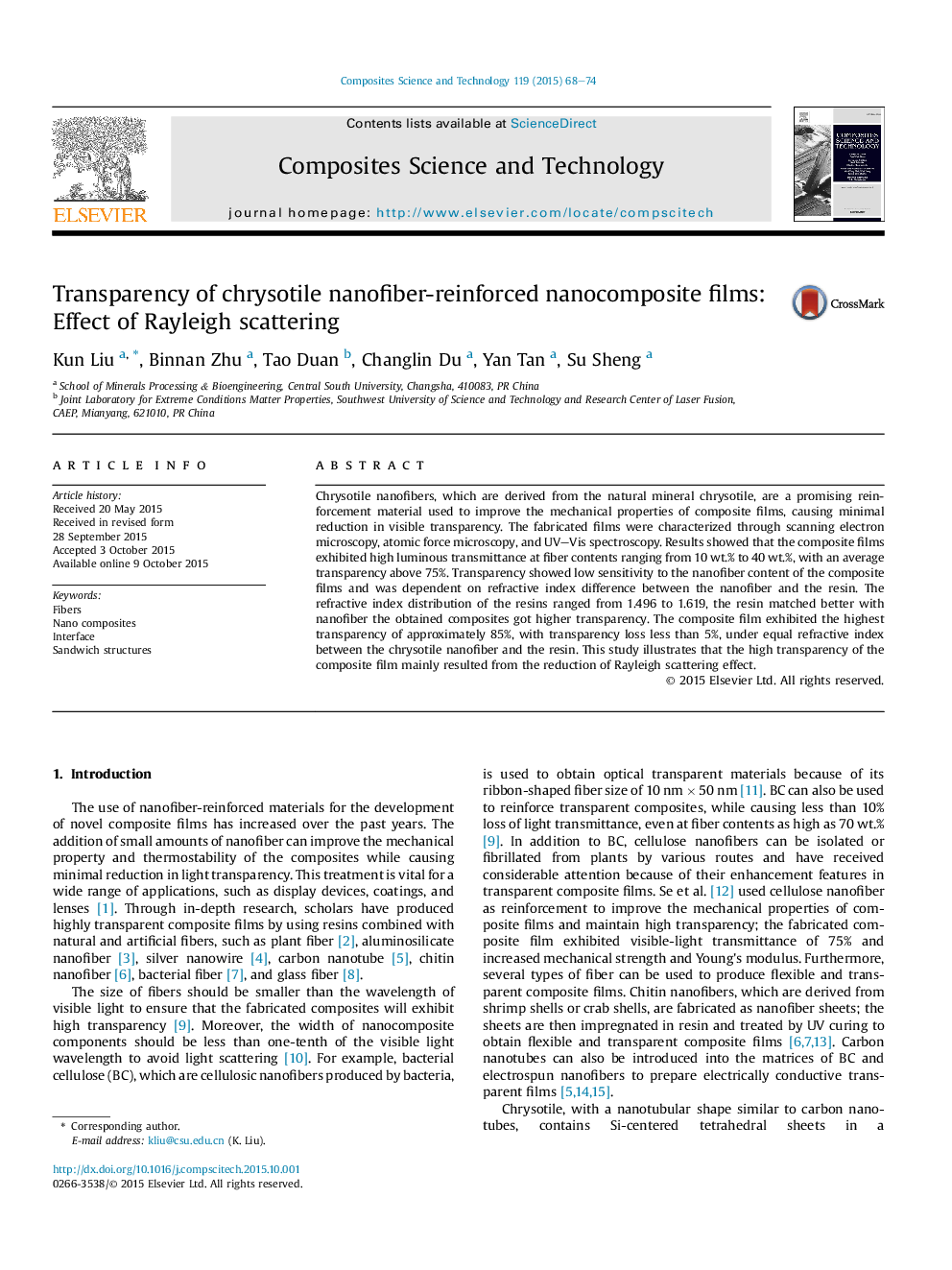| Article ID | Journal | Published Year | Pages | File Type |
|---|---|---|---|---|
| 820067 | Composites Science and Technology | 2015 | 7 Pages |
Chrysotile nanofibers, which are derived from the natural mineral chrysotile, are a promising reinforcement material used to improve the mechanical properties of composite films, causing minimal reduction in visible transparency. The fabricated films were characterized through scanning electron microscopy, atomic force microscopy, and UV–Vis spectroscopy. Results showed that the composite films exhibited high luminous transmittance at fiber contents ranging from 10 wt.% to 40 wt.%, with an average transparency above 75%. Transparency showed low sensitivity to the nanofiber content of the composite films and was dependent on refractive index difference between the nanofiber and the resin. The refractive index distribution of the resins ranged from 1.496 to 1.619, the resin matched better with nanofiber the obtained composites got higher transparency. The composite film exhibited the highest transparency of approximately 85%, with transparency loss less than 5%, under equal refractive index between the chrysotile nanofiber and the resin. This study illustrates that the high transparency of the composite film mainly resulted from the reduction of Rayleigh scattering effect.
